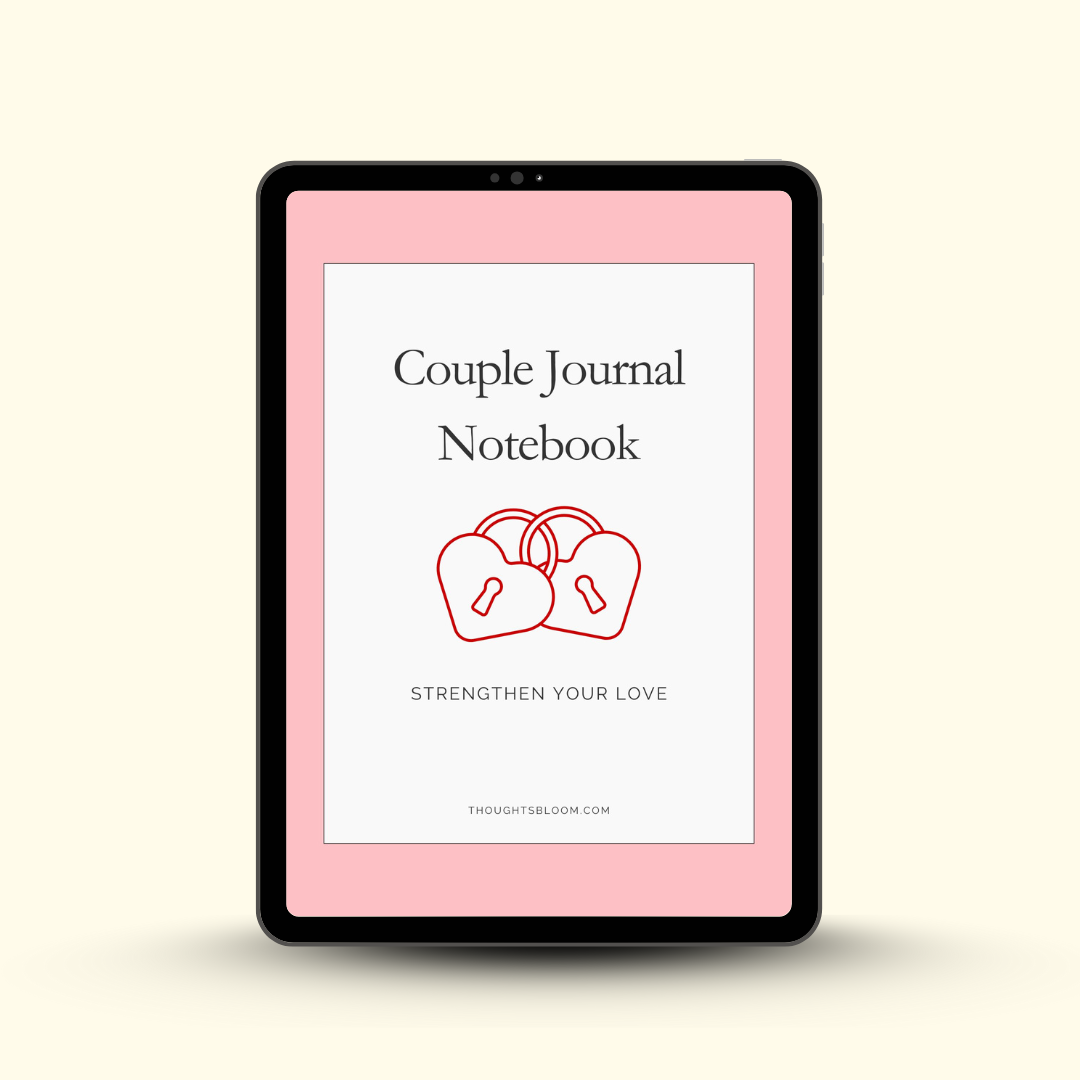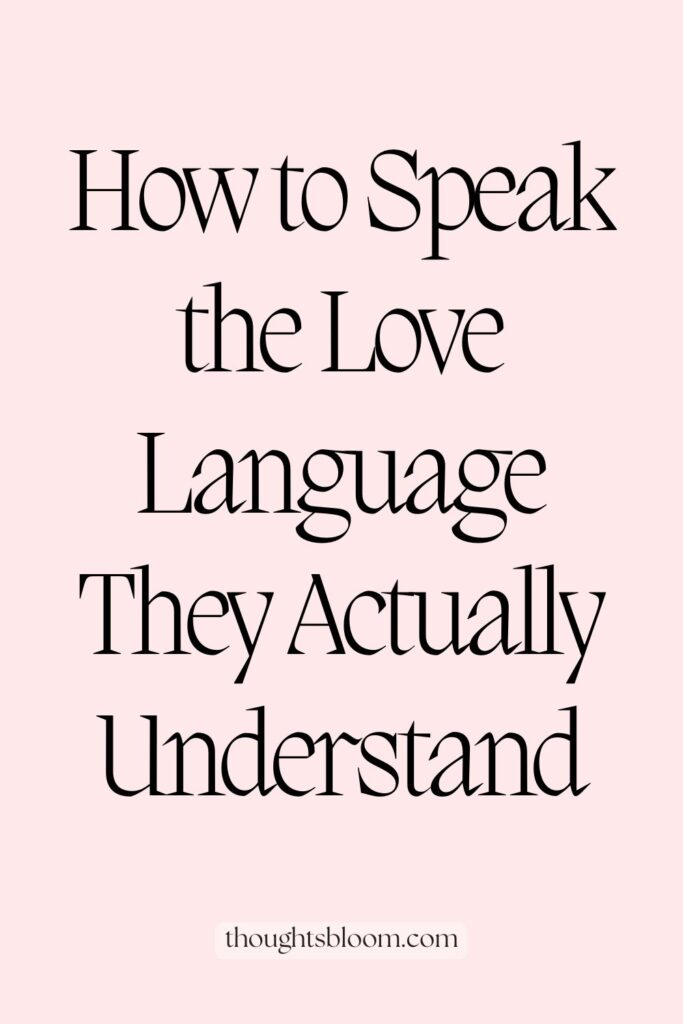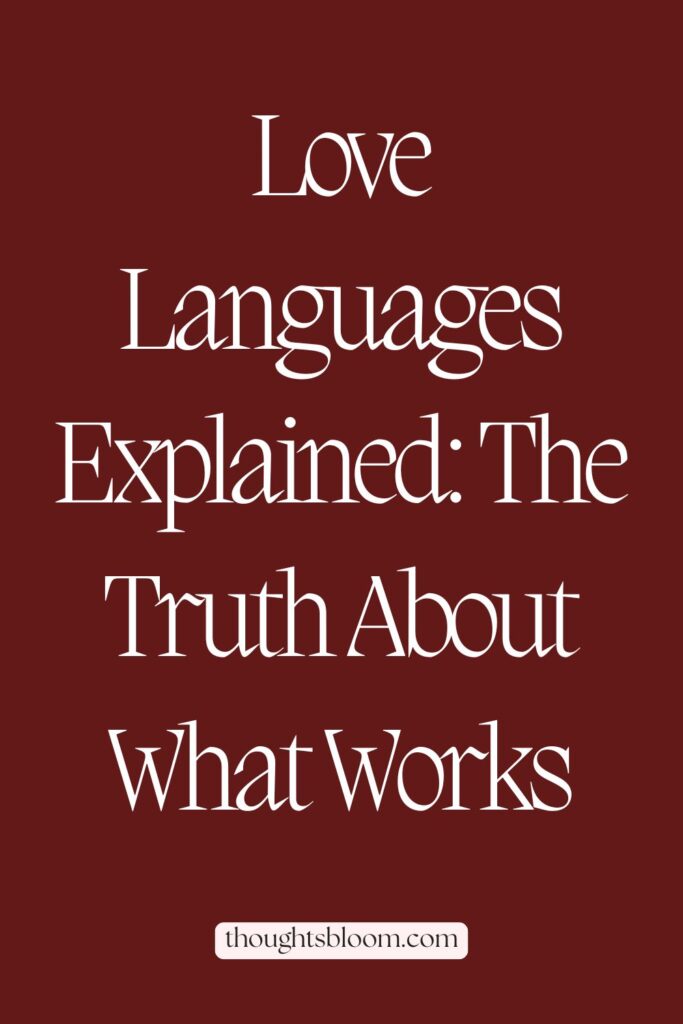Love Languages Explained: The Truth About What Works
You’re loving them the best way you know how… and that’s the problem.
You’ve probably heard it before: “My love language is quality time,” or “He just doesn’t get my love language.”
These five little categories have gone viral in dating conversations, relationship podcasts, and even TikToks. But what do they actually mean for your love life?
Here’s the truth: love languages can either transform your relationship or trip you up. They’re a great framework, but like any tool, it depends on how you use them. In this guide, we’ll unpack what the five love languages really mean, how to use them in everyday life, and the common mistakes couples make when they lean too hard on them.
By the end, you’ll know how to make love languages work for your relationship—and where to be careful.
What Are the 5 Love Languages?
Dr. Gary Chapman introduced the idea of love languages in the 90s, and it’s been shaping relationships ever since. His point was simple: we all give and receive love in different ways, and when our partner’s style doesn’t match our own, it can feel like a disconnect.
Here are the five love languages:
- Words of Affirmation – Compliments, encouragement, or simply saying “I love you.” For people with this love language, words carry real weight. A thoughtful text before a big presentation can mean as much as a bouquet of roses.
- Acts of Service – Love is shown through actions: cooking dinner, fixing something broken, or running an errand so your partner doesn’t have to. For these people, the phrase “actions speak louder than words” is gospel.
- Receiving Gifts – It’s not about price tags—it’s about thoughtfulness. A partner who grabs your favorite snack after work is saying, “I was thinking of you.” If this is your language, a small token can feel like proof of love.
- Quality Time – Attention and presence matter more than anything. Date nights, weekend getaways, or just a phone-free walk together—what matters most is undivided time.
- Physical Touch – Affection through touch: holding hands, cuddling, hugging, kissing, or sexual intimacy. Touch is their way of feeling secure and connected.
Why Love Languages Matter in Relationships
Have you ever had that nagging thought, “I do so much for them, but they don’t even notice”? That’s often a love language mismatch.
- A wife might constantly clean and cook (acts of service) but still feel unloved because her husband rarely says “thank you” (words of affirmation).
- A girlfriend might buy thoughtful gifts (receiving gifts), while her partner longs for her to just sit down and talk without checking her phone from time to time (quality time).
The result?
Both partners feel unappreciated, even though love is there. Love languages help translate effort into something that actually lands.
When couples understand each other’s languages, it reduces unnecessary conflict. Instead of thinking, “Why doesn’t she care?” you realize, “She does care, just in a different way.”
The Upside of Love Languages
When they’re used well, love languages can bring huge benefits:
1. They Increase Awareness
Sometimes, people don’t even realize what makes them feel most cared for. Taking the time to figure out your love language forces you to reflect on what truly fills your cup.
2. They Encourage Effort
Knowing your partner’s love language helps you go beyond autopilot. It turns love into something intentional. Instead of just guessing, you start meeting them where it counts.
3. They Deepen Emotional Connection
When your partner shows love in a way that resonates, it creates safety and intimacy. You feel seen. For example, a simple back rub (physical touch) can soothe more than hours of problem-solving talk.
Everyday Examples of Using Love Languages
1. If your partner’s language is words of affirmation, try sending them a short morning text like: “Good luck on your meeting—I know you’ll crush it.”
2. If it’s acts of service, surprise them by handling that chore they hate most.
3. If it’s receiving gifts, pick up their favorite drink on your way home.
4. If it’s quality time, put the phones away and take a 20-minute walk together.
5. If it’s physical touch, greet them with a long hug at the end of the day.
Little things go a long way when they’re in the right “language.”
The Downsides of Love Languages
Here’s the flip side: love languages can backfire if you treat them as gospel.
1. They Oversimplify People
We’re complex. Reducing all of love to five neat boxes misses a lot of nuance. Most people value several languages, not just one.
2. They Can Become a Scorecard
Instead of creating connection, love languages sometimes spark resentment: “I told you mine is quality time. You never give it to me.” It becomes about keeping track of who’s failing.
3. They Don’t Fix Deeper Issues
If there’s no trust, respect, or basic compatibility, no amount of “speaking the language” will save the relationship.
4. They Can Be Weaponized
Some people use love languages as a way to demand, not connect: “If you loved me, you’d buy me gifts.” That’s not love—that’s manipulation.
How to Use Love Languages the Right Way
So how do you avoid the traps? Think of love languages as a guide, not a rulebook.
- Stay Flexible: You and your partner probably connect with more than one love language. Don’t box each other in.
- Check In Regularly: Needs shift over time. The love language that mattered most at the start of your relationship might change years later.
- Blend Them: A balanced relationship often includes a mix of all five languages, even if one stands out.
- Make It Natural: Don’t treat love languages like a to-do list. Infuse them into everyday moments so they feel genuine.
Pro Tip: Ask your partner, “What’s one small thing I could do this week to make you feel more loved?” You’ll often get clearer answers than any quiz can provide.
Beyond Love Languages
While love languages are useful, they’re not the whole picture. Pair them with other frameworks to build stronger, healthier connections.
- Attachment Styles help you understand how each partner handles closeness and independence.
- Conflict Resolution Skills teach you how to fight fair and repair after arguments.
- Emotional Intelligence helps you navigate moods, triggers, and empathy.
When you combine these with love languages, you get a relationship toolkit that’s way more powerful than any single idea.
Download the Free Couple Journal Notebook
This free printable journal is filled with 100 guided prompts and space to reflect, reconnect, and document your love story—one question, one page, one honest moment at a time.
FAQs About Love Languages
Do love languages really work?
Yes—if you use them as a tool for connection, not a rigid system.
Can your love language change?
Absolutely. Life seasons and experiences can shift what makes you feel loved.
What if my partner doesn’t speak my love language?
Talk about it. Show them what matters to you, and ask what makes them feel cared for. Relationships thrive when both partners meet in the middle.
Wrap-Up: Love Languages Explained
Love languages explained in one line? They help you translate love, but they’re not love itself. They work best when you treat them as a framework, not a formula.
The real secret isn’t just speaking your partner’s love language. It’s staying curious about what makes them feel cherished and willing to adapt along the way.
At the end of the day, love languages can guide you, but your everyday attention, respect, and effort are what make love last.










